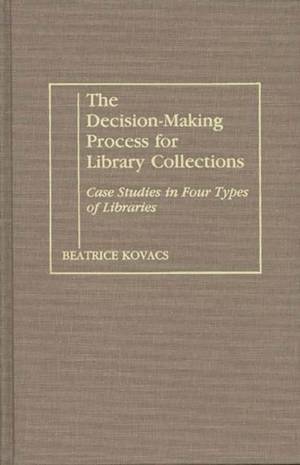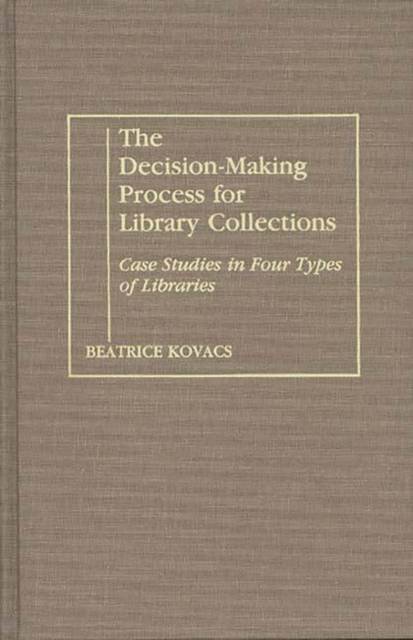
En raison d'une grêve chez bpost, votre commande pourrait être retardée. Vous avez besoin d’un livre rapidement ? Nos magasins vous accueillent à bras ouverts !
- Retrait gratuit dans votre magasin Club
- 7.000.000 titres dans notre catalogue
- Payer en toute sécurité
- Toujours un magasin près de chez vous
En raison de la grêve chez bpost, votre commande pourrait être retardée. Vous avez besoin d’un livre rapidement ? Nos magasins vous accueillent à bras ouverts !
- Retrait gratuit dans votre magasin Club
- 7.000.0000 titres dans notre catalogue
- Payer en toute sécurité
- Toujours un magasin près de chez vous
The Decision-Making Process for Library Collections
Case Studies in Four Types of Libraries
Beatrice Kovacs
162,95 €
+ 325 points
Description
A considerable variety of information for libraries planning materials selection policies is relayed in reviews of the relevant literature and in case studies of typical special, public, academic, and school libraries. The case studies consider the location and size of each library as well as its budget, organizational chart, and materials selection procedure. In all, a good collection, well organized and easy to use. Actual collection develpment policies are appended, along with bibliography and index. Booklist
As an outgrowth of the author's discovery that very little material exists discussing how to develop a library collection, this book seeks to identify how some experienced selectors think while deciding to buy, not buy, or discard materials from their collections. While subject areas or types of materials for which selectors are responsible may be vastly different, the author found that all selectors do collection development in the same way, and consider the same types of issues and problems in their decision-making process. The book, then, is designed to help librarians identify this process and understand the theoretical as well as practical aspects of building collections. Based on information gathered over a period of six years in research at academic, public, school, and special libraries, the book will be just as valuable to experienced practitioners of collection development as it will be to students and newcomers to the field. The first section discusses decision making and collection development, including general trends, theories and literature, and organizational administration. The second section provides case studies of four different types of libraries: public, school, academic, and special. Each type is represented by studies of four specific libraries, with a summary concluding each set of libraries. Finally, a third section draws conclusions based on the case studies, covering dynamic factors affecting the decision-making process as well as the process itself. The book concludes with a group of appendices, a bibliography, and an index. This important work will be an essential reference source for courses in library science and for working librarians in all types of institutions, as well as a valuable addition to college, university, and public libraries.Spécifications
Parties prenantes
- Auteur(s) :
- Editeur:
Contenu
- Nombre de pages :
- 208
- Langue:
- Anglais
- Collection :
Caractéristiques
- EAN:
- 9780313260421
- Date de parution :
- 20-04-90
- Format:
- Livre relié
- Format numérique:
- Genaaid
- Dimensions :
- 161 mm x 244 mm
- Poids :
- 498 g

Les avis
Nous publions uniquement les avis qui respectent les conditions requises. Consultez nos conditions pour les avis.






